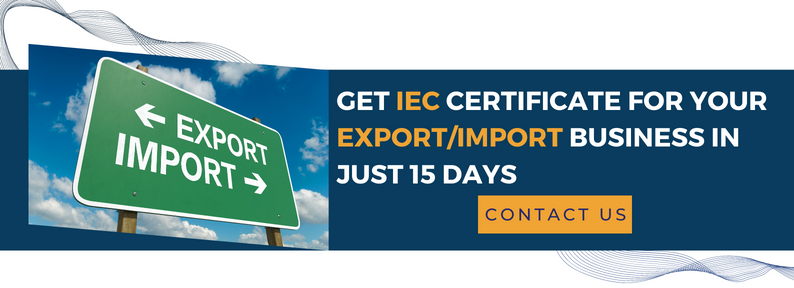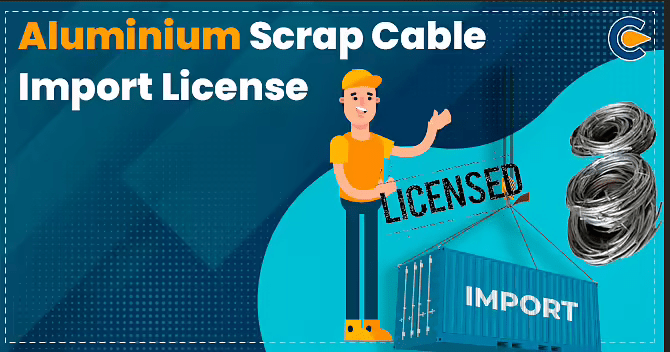The current foreign trade policy permits the import of any metallic waste or scrap provided it doesn’t include any toxic or radioactive waste, hazardous materials, radioactive waste contamination, as well as any kind of weapons, ammunition, mines, shells, live or used cartridges, or other explosive materials in any shape or form. Also, as per the Metal Scrap Import Policy, India and ASEAN countries have a free trade agreement. The amount of scrap aluminium imported today is roughly 19,000,000 MT. Furthermore, the ASEAN-India Free Trade Area[1] members Malaysia, Vietnam, Thailand, and South Korea account for 69% of essential primary aluminium goods imports, including billet and wire today (AIFTA). Metal scrap, non-ferrous metals, and metalliferous ores comprise the bulk of ASEAN’s exports to India. The Director General of Foreign Trade announced additional restrictions on importing unshredded scrap metal in 2017 as an essential part of the current metal scrap import policy. India is now the third-largest importer of scrap in the world, with an annual scrap consumption of INR 750 billion (20.40 million tonnes) and imports of 6.48 million tonnes for an estimated INR 390 billion.
Key Highlights of the Policy
According to the notice, all imports of unshredded scrap metal must be delivered to ports equipped with container scanners and radiation detection apparatus by the end of the first quarter of 2017. The major ports, including Chennai, Cochin, Ennore, JNPT (Navi Mumbai), Kandla, Mormugao, Mumbai, New Mangalore, Paradip, Tuticorin, Visakhapatnam, Pipavav, Mundra, Kolkata, must now have radiation portal monitors and container scanners installed and operationally.
The notification also states that any inland container depot (ICD) can handle clearing unshredded scrap metal as long as the metal goes through the list of recognised maritime ports equipped with radiation detectors and container scanners.
Imports of certain metals’ waste or scrap—including brass, copper, iron, nickel, tin, aluminium, zinc, magnesium, and steel—that fall under particular items in the ITC (HS) classification are allowed via all ports in shredded form without a licence. Such freely importable processed metallic scrap is accepted in exchange for the importer submitting a bank guarantee of Rs. 10 lakhs (US$15,000).
National Steel Policy 2017
The National Steel Policy 2017 (NSP-2017) aims to establish 300 million TPA of steel production capacity by 2030, with a contribution of 35–40% from the EAF/IF route, to create an internationally competitive steel sector. Although scrap is the principal source of raw materials for the secondary industry, the primary sector also includes scrap in the charge mix of the BOF to the extent of 15% to increase productivity, lower production costs, and meet other process requirements. The expansion of the steel industry and the achievement of the NSP-2017 on the available raw materials at reasonable prices. Hence, one of the crucial elements for the future expansion of the EAF/IF sector and the primary industry is the availability of excellent quality and quantity scrap.
Advantages of Metal Scrap Import Policy
Advantages for India as per the policy for scrap are as follows:
- Encourages Recycling: Importing metal scrap import policy can promote recycling and reduce the need for new raw materials. This can help conserve natural resources and reduce environmental impact.
- Boosts Industrial Development: Metal scrap import policy can support the development of the domestic metal recycling industry and create jobs.
- Cost-Effective Practise: The metal scrap import policy can be more cost-effective than virgin materials, which can be expensive and require more energy to extract and refine.
- Improves Trade Balance: Importing metal scrap can help improve the trade balance by reducing the need to import expensive raw materials.
The Metal Industry Association of India has requested the formulation and implementation of a Metal Recycling Policy appropriately backed by an “industry-status” recognition to ensure the industry’s rapid expansion. Around two to three per cent of the Indian GDP is contributed through metal recycling. Metals Recycling will contribute more to the Indian GDP as it expands and expands at a CAGR of 11.4%, ensuring sustainable growth and the protection of natural resources. As part of its overall strategy on steel scrap, the government is considering putting up more than 20 scrap yards nationwide to make steel from scrap. The car scrappage policy will serve as the foundation for the steel scrap policy, which will set forth the guidelines for how scrap will be combined and recycled into steel.
The administration has promoted more recent infrastructure initiatives. By the end of 2030–31, the government hopes to have produced 300 million tonnes of steel, using iron ore and scrap as inputs. One hundred million tonnes of steel are currently produced domestically. Using scrap metal effectively can help achieve the ultimate goal.
Drawbacks of Metal Scrap Import Policy
The drawbacks of the policy are as follows:
- Quality Control Issues: Metal scrap may not meet the required quality standards, leading to safety and quality control issues during processing and use.
- Environmental Concerns: Metal scrap import policy can also raise environmental concerns, particularly if it is contaminated with hazardous materials or pollutants.
- Disruption of Local Markets: Importing metal scrap can disrupt local markets by flooding the market with cheaper imported materials, potentially putting domestic producers out of business.
- Risk of Fraud: Metal scrap under the metal scrap import policy is vulnerable to fraud, mainly if there are inadequate checks on the quality and quantity of imported materials.
Scrap imports into India have decreased significantly due to most Indian mills’ unwillingness to pay competitive pricing. India’s recycling and basic materials markets have enormous prospects, but they have voiced displeasure over several issues. These difficulties include complicated customs processes, a lack of digital processing, complex import tariff procedures, and corruption and bureaucracy.
India’s annual purchase of 10 million tonnes of metallic scrap is projected to be negatively impacted by the United States’ introduction of import tariffs on primary metals like steel and aluminium. This tariff’s installation is anticipated to have a ripple effect on the world’s scrap business, which might be detrimental to its financial stability.
India has low environmental regulations. This indicates that the ecology in India is likely to suffer if metallic garbage from wealthy nations enters the country. This also means that it is impossible to determine whether India’s enormous demand for metallic scrap is primarily driven by its desire to recover metal from trash or by the country’s loose environmental regulations, which make it a safe sanctuary for disposing of metallic waste.
Opportunities for India
- The production of India’s steel industry is anticipated to increase from its present level of 89 million metric tonnes annually to as much as 300 million metric tonnes by 2030. Just consider how much scrap will be needed in ten or so years.
- Almost 200 million automobiles are already in use in India, and once they reach ten and fifteen years old, “sooner or later they will come for shredding. Suppose India produces 300 million metric tonnes of steel annually. In that case, 150 million metric tonnes of it will be produced using induction or electric arc furnace (EAF) processes, which need a lot of waste.
- Compared to iron ore or coal, scrap steel uses 74% less energy to make.
- Every tonne of recycled steel has several advantages, including a 58% reduction in CO2 emissions and the saving of 1.1 tonnes of iron ore and 0.5 tonnes of coal. By doing this, India’s carbon footprint will be reduced.
- Recycling and reprocessing are the two divisions of the metal processing business. India can particularly benefit from the recycling sector because it requires a lot of labour, and the country has a surplus of labour. The recycling sector already employs 6-7 lakh people, but significant room exists for expansion.
Conclusion
India is a country that exports and imports metals and metal scrap, and its imports of metal scrap under the Metal Scrap Import Policy are increasing each year exponentially with the intention of recycling, which is not only successful but also sustainable. This segment is fascinating to analyse since it has both an export market and an import necessity. According to trade analysts, India’s import demand will be close to 10 million tonnes annually by 2020, which is about twice the current import pace. As a result, this industry merits attention. The same year India’s current foreign trade policies will begin to anticipate the creation of new foreign trade policies for 2021–2025 is 2020. Time will tell how much more emphasis the government will place on the Exim policies of this highly intriguing sector—metals and metal scrap.
Also Read:
How To Obtain IEC Code In India
Metal Scrap Import Procedure In India
How To Start A Metal Scrap Trading Business?













